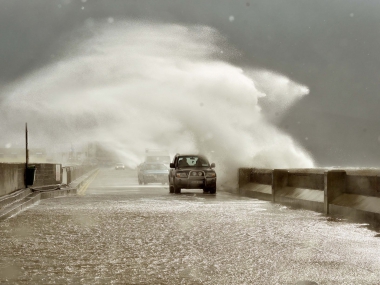Can nature make your city climate-resilient?
Edited on
12 January 2018With Ireland having just experienced its worst weather event in over fifty years – in the shape of Storm Ophelia – it is unsurprising that climate change is once again a headline topic. While Ireland was being battered by wind and rain, Spain, Portugal and California were struggling to tame raging wildfires. Two weeks ago the port town of Killybegs was flooded following heavy rains and an unusually high tide.

In August, the North West region – Donegal and Derry – suffered extensive flood damage with infrastructure being washed away and communities cut off. The growing magnitude and increased frequency of such evens clearly points to a climate change – despite the claims of some Irish politicians.
This article by Birgit Georgi highlights a number of innovative strategies being employed by cities across Europe to make them more climate-resilient. The nature-based solutions showcased focus around both blue and green infrastructure, and the role of both not only in neighbourhood and building design but also in energy generation, and urban farming through roof-top and rain gardens. Key to the success of all initiatives was collaboration across sectors and stakeholders.
The new National Planning Framework for Ireland, Ireland 2040 – currently in its final phase of public consultation - recognises that Ireland is facing increasing environmental and climate pressures. As an all-of-government document that will be statutory in nature, the Framework commits to the future planning and development of our communities at local level being refocused “to tackle Ireland’s higher than average (45%) carbon-intensity per capita and enabling a national transition to a competitive low carbon, climate resilient and environmentally sustainable economy by 2050”. The Government’s National Climate Policy Position establishes the fundamental national objective of transitioning Ireland to a low carbon, climate-resilient economy by 2050. So with this acknowledged need to accelerate action on climate change, the key question of ‘how’ remains. Articles such as this, which share good practice from across Europe and make us aware of the possibilities, are central to answering that question.
article from Birgit Georgie URBACT lead expert can be found here
Submitted by Caroline Creamer on
